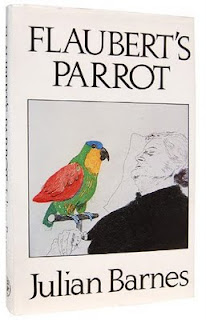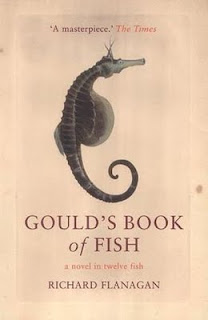 For notwithstanding you are in the Bloom of your Life; tho’ ev’ry Pleasure courts you; tho’ you are Nature’s Darling, and have internal Qualities in proportion to your Beauty; tho’ the World resounds your Praises from Morning till Night, and consequently you must have a just Title to a superior Degree of Understanding than the rest of your Sex; Yet your Wit is no ways flashy; Your Taste is refin’d, and I have had the Honour to hear you talk more learnedly than the wisest Dervise, with his venerable Beard, and pointed Bonnet: You are discreet, and yet not mistrustful; you are easy, but not weak; you are beneficent with Discretion; you love your Friends, and create yourself no Enemies. Your most sprightly Flights borrow no Graces from Detraction; you never speak a misbecoming Word, nor do an ill-natur’d Action, tho’ ’tis always in your Power. In a Word, your Soul is as spotless as your Person. You have, moreover, a little Fund of Philosophy, which gives me just Grounds to hope that you’ll relish this Historical Performance better than any other Lady of your Quality would do.
For notwithstanding you are in the Bloom of your Life; tho’ ev’ry Pleasure courts you; tho’ you are Nature’s Darling, and have internal Qualities in proportion to your Beauty; tho’ the World resounds your Praises from Morning till Night, and consequently you must have a just Title to a superior Degree of Understanding than the rest of your Sex; Yet your Wit is no ways flashy; Your Taste is refin’d, and I have had the Honour to hear you talk more learnedly than the wisest Dervise, with his venerable Beard, and pointed Bonnet: You are discreet, and yet not mistrustful; you are easy, but not weak; you are beneficent with Discretion; you love your Friends, and create yourself no Enemies. Your most sprightly Flights borrow no Graces from Detraction; you never speak a misbecoming Word, nor do an ill-natur’d Action, tho’ ’tis always in your Power. In a Word, your Soul is as spotless as your Person. You have, moreover, a little Fund of Philosophy, which gives me just Grounds to hope that you’ll relish this Historical Performance better than any other Lady of your Quality would do. -- Voltaire, from the dedication of
Zadig (1747).
I was interested to read more about Madame de Pompadour (Louis XV's mistress and an ambitious member of the mid-18th century Parisian bourgeoisie who eventually became the most politically influential woman in France) after I read Voltaire's
Zadig, which is dedicated to the marquise and filled with allusions to the religious and political upheavals of the day. Luckily my interest was easily sated since I bought a copy of Christine Pevitt Algrant's
Madame de Pompadour: Mistress of France (2002) four or five years ago and it has been sitting patiently on my bookshelf ever since.
Madame de Pompadour (1721-1764) was born Jeanne-Antoinette Poisson to an upper-middle class army procurement officer and his beautiful and charming Parisian wife. Her mother, in fact was so beautiful and charming that, like most of the rest of Paris, she was the mistress of a man (and possibly several men) more powerful than her husband. There is, in fact, some doubt that Msr. Poisson was not really his daughter's father and the interest shown in the education and placement of little Jeanne-Antoinette by Charles Lenormand de Tournehem, a member of the wealthy and powerful Parisian elite, leads many to suspect that he was her biological father.

Everyone noticed how pretty, graceful, smart and well- mannered Jeanne-Antoinette was and she was spared no expense in her education in the arts and manners of the upper-crust. She was married to nephew of Tournehem, even though all around her seemed to know she was destined for better things (oddly, Parisian society said you can't go into the business of becoming a mistress until you have already become a wife). Really she was being primed to be the mistress of someone powerful for most of her life, and when there was an opening in the love life of the young and handsome King of France, Louis XV, strings were pulled to make sure that the lovely Jeanne-Antoinette was noticed by his majesty.
She soon became the favorite of his mistresses, was given the title of a marquise, and her husband was sent to a far off post and forced to cede his wife to the king and the court in Versailles. The king was a moody and indecisive man who hated the pomp and ceremony of court and preferred to be hunting, having small dinners with close friends, or having sex with his bevy of "young birds" -- beauties picked from all over France for his enjoyment. The marquise was smart enough to know what the king wanted, and to pour all her talent into creating an environment where the king would be most comfortable -- and ensuring her success at court by making sure no one else could provide what she did for the king.
Although she was his mistress, Algrant argues that their relationship was probably more one of friendship and routine than sex. Madame de Pompadour frequently describes herself as cold in her correspondence, and she encouraged the king's dalliances with his "little birds" as long as none of them got too uppity and threatened her place.

Madame de Pompadour used her influence with the king to procure placements and favors for her friends and family, and gradually her place at court became the only venue to an audience with the king. Those who flattered her were rewarded, those who resented the intrusion of a mistress and a member of the bourgeoisie into the elite and isolated environment of the court were punished. As the king became more and more disassociated from his subjects and the country, the marquise took over more and more of the correspondence and audiences that got things done in French politics. Religious and political unrest, the disastrous and expensive Seven Years War, and the hatred and scapegoating of the French people took their toll on Madame de Pompadour, who never lost her grip over the king or the court, but finally succumbed to years of poor health at the age of 42.
Algrant's book is a very readable and well-researched life of this interesting, ambitious and flawed woman who became a repository for the disgust and frustration of the French people for the royal family two generations before the ill-fated Marie-Antoinette (who was married to Louis XV's grandson). The last quarter of the book gets a little bogged down in battles and nobles and bureaucratic intrigue, but that is more history's fault than Algrant's. Definitely worth reading.
 Attention all archivists and historians: you should read this book! It gets 27 thumbs up from me.
Attention all archivists and historians: you should read this book! It gets 27 thumbs up from me.




























